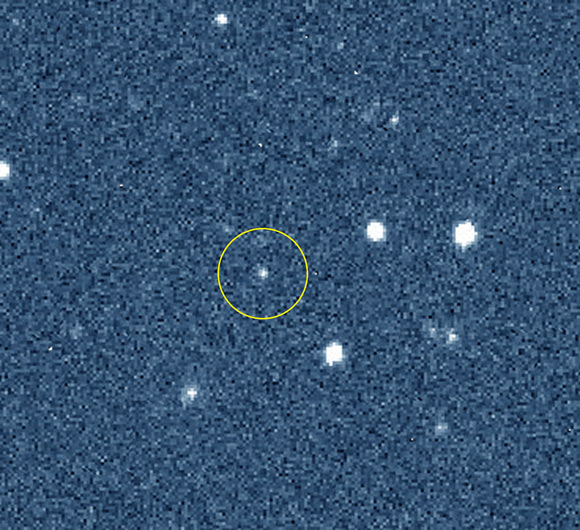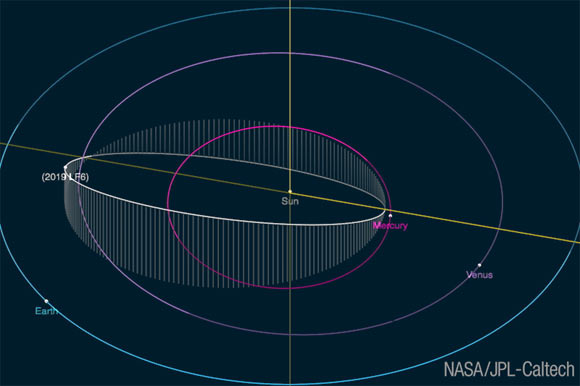Astronomers using the Zwicky Transient Facility (ZTF), a state-of-the-art camera at the Palomar Observatory in southern California, have spotted a very unusual asteroid, named 2019 LF6.

This image of 2019 LF6 was captured by ZTF on June 10, 2019. Image credit: ZTF / Caltech Optical Observatories.
2019 LF6 is one of only 20 known ‘Atira’ asteroids, whose orbits fall entirely within Earth’s.
The object is about 3,300 feet (1 km) in size and circles the Sun roughly every 151 days.
In its orbit, 2019 LF6 swings out beyond Venus and, at times, comes closer in than Mercury, which circles the Sun every 88 days.
“2019 LF6 is very unusual both in orbit and in size — its unique orbit explains why such a large asteroid eluded several decades of careful searches,” said Dr. Quanzhi Ye, a postdoctoral scholar at Caltech and a member of the ZTF team.

The orbit of asteroid 2019 LF6 (white) falls entirely within the orbit of Earth (blue). Image credit: NASA / JPL-Caltech.
ZTF scans the skies every night for transient objects, such as exploding and flashing stars and moving asteroids, and is well-suited for finding Atira asteroids, which have short observing windows.
To find such asteroids, the ZTF team has been carrying out a dedicated observing campaign, named Twilight. So far, the program has discovered one other Atira asteroid, named 2019 AQ3.
Before 2019 LF6 came along, 2019 AQ3 had the shortest known year of any asteroid, orbiting the Sun roughly every 165 days.
“Both of the large Atira asteroids that were found by ZTF orbit well outside the plane of the Solar System,” said Caltech Professor Tom Prince, a member of the ZTF team.
“This suggests that sometime in the past they were flung out of the plane of the Solar System because they came too close to Venus or Mercury.
The discovery of 2019 LF6 was announced in the Minor Planet Electronic Circular (MPEC) newsletter issued by the IAU’s Minor Planet Center on June 19, 2019.
_____
P. Bacci et al. 2019 LF6. Minor Planet Electronic Circular # 2019-M45







